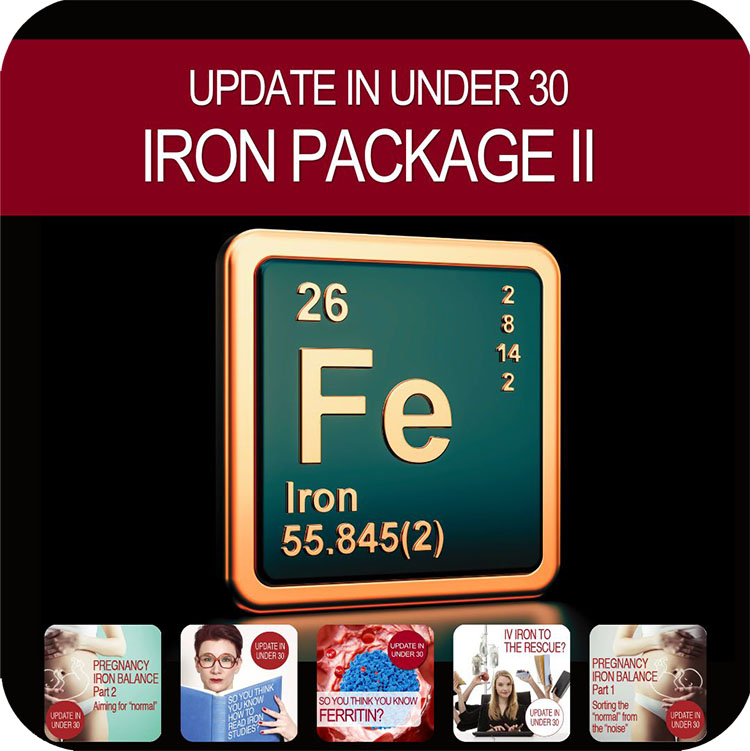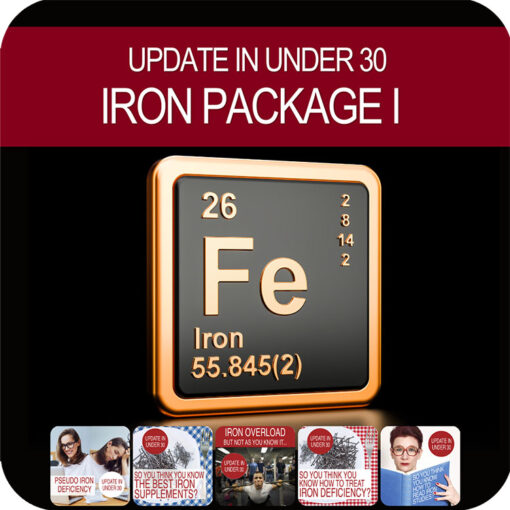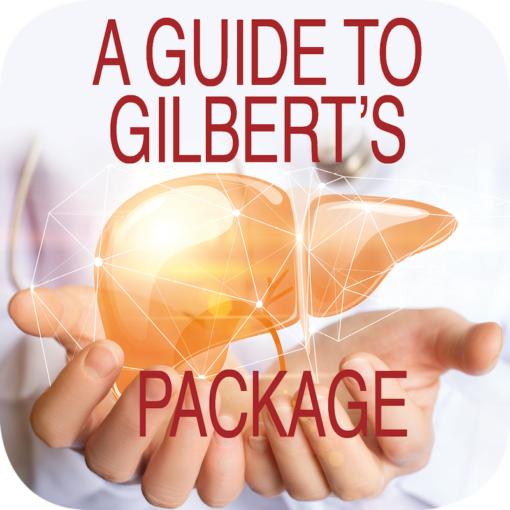Description
Iron issues are an everyday encounter for those of us working in nutrition. As a result, we need to constantly attend to our skill-set regarding iron assessment and refine our knowledge regarding best management. This 5 episode compilation builds upon the foundations established in Iron package I and is unashamedly women-centric with 2 episodes on the complex area of iron balance in pregnancy, however, men and children do get a little look-in in other episodes!
Here’s an overview of each session…
Pregnancy Iron Balance – sorting the “normal” from the ‘noise”
It starts with a simple enough question: What should women’s ferritin levels be in pregnancy? But the answer will surprise many. There are in fact two. The first reflects the practice guidelines for GPs and obstetricians in most western countries regardless of trimester and then there’s another, that is arguably more evidence based, accounts for the essentiality of physiological anaemia in pregnancy & is also, sensibly, trimester specific. To challenge the ‘noise’ and have the confidence that ‘normal’ is ‘enough’, we need to better understand the mother’s protective physiological adaptation of iron regulation and the intricate systems the foetus has to ensure its needs are met. This of course is not without limit, so we need to also be clear about the maternal serum ferritin threshold for negative impact on the foetus and newborn. Getting the balance or iron right in pregnancy for both mother and baby, is perhaps easier than we have been led to believe.
Pregnancy Iron Balance Part 2 – aiming for “normal”
In this continuation of our discussion about better iron balance for mum and baby we now map what is happening in each trimester with regard to requirements and regulation, and accordingly, what ‘healthy looks like’ in terms of both serum ferritin and transferrin, at every time point. This also gives us a clear practice protocol around when and how exactly to treat iron deficiency in pregnant women. Additionally, we review the risks of both under and over-treatment.
IV Iron to the Rescue
While rates of iron deficiency and related anaemia continue to grow, the increase in prescriptions of IV Fe have expanded exponentially in western countries. What is behind this change in practice regarding how we treat iron deficiency and does it match with responsible prescribing? Do the benefits always outweigh the risks? And while we’re on the topic, who is most likely to benefit and what are all the risks? In light of a current class action in the US, relating to a lesser talked about adverse event associated with IV Fe and recent complaints here in Australia against GPs, allegedly due to inadequate information to enable informed patient consent…it’s time to answer these questions and more. When is IV Fe a means of rescue and when is it a risky repletion strategy with no evidence of advantage?
So You Think You Know How to Read Iron Studies?
Overt Iron Deficiency Anaemia or Haemochromatosis aside…do you understand the critical insights markers like transferrin and its saturation reveal about your patients iron status? Most practitioners don’t and as a result give iron when they shouldn’t and fail to sometimes when they should. This audio complete with an amazing cheat sheet for interpreting your patients Iron Study results will sharpen your skills around iron assessment, enabling you to recognise the real story of your patients’ relationship with iron.
So you think you know Ferritin?
Serum Ferritin has been sold to us as reflecting our patients’ iron stores and while we know there are some scenarios where this association is broken e.g. inflammation, how well does it reflect true hepatic iron content for the rest of us? Poorly, is the consensus. Why is this and what do Serum Ferritin results actually speak to then? Well, something quite different, it turns out – and generally as a consequence of this, more is not better! Given Ferritin is routinely reported on for patients with any iron concerns, what value can we still extract from these results then and are we getting closer to being able to describe what desirable results actually look like?







